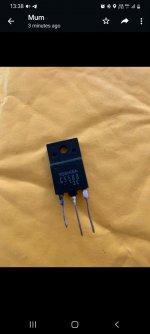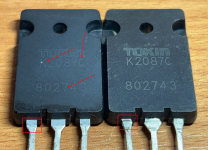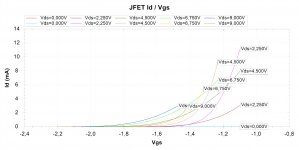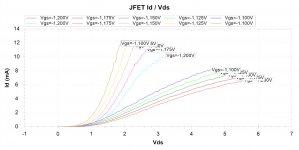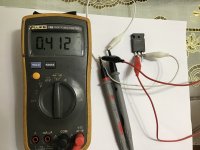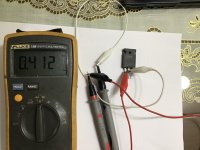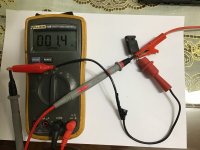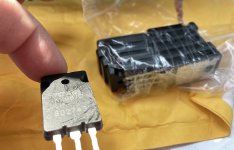...... This is probably a sign for me to take a break from building.
.....
whom you're trying to deceive?
us, or yourself ?

Just so people don't waste their time (or get their hopes up) I've tried to buy some of these from the supplier YOYCART.COM I was told that they are now out of stock. (Even though their website states 200 available).
"We checked it with supplier and they just replied us this one is sold out.
J.......@yoycart.com".
"We checked it with supplier and they just replied us this one is sold out.
J.......@yoycart.com".
once they will hit the market in quantity, and with proper price
that level of price, up to recently, was from simple reason - nobody did wanted them
that level of price, up to recently, was from simple reason - nobody did wanted them
Hey Haiqu, this was what came through, shape yes, other bits no and only 1 of themDid they look like the right packages at least?
Attachments
The cats out of the bag. With demand comes discovery. These will likely appear again, perhaps in quantity, but they won't be cheap anymore.
Just like tubes...
Just like tubes...
Those look like the ones I got. They measure like triodes for me.
Try measuring in the 0-40V and 0-1 amp range.
Try measuring in the 0-40V and 0-1 amp range.
FYI:
ds: about 1.5ohm;
gs/gd: about 0.41v.
ds: about 1.5ohm;
gs/gd: about 0.41v.
Attachments
Last edited:
By using new iTracer, I was able to plot a 2SK2087C that I bought from Ali, not sure it genuine, but the curve plot looks good anyway.
At least the curves are SIT-like, not regular MOSFETs.
https://www.diyaudio.com/community/threads/new-tracer-is-coming.379759/


At least the curves are SIT-like, not regular MOSFETs.
https://www.diyaudio.com/community/threads/new-tracer-is-coming.379759/
👍Thanks a lot.By using new iTracer, I was able to plot a 2SK2087C that I bought from Ali, not sure it genuine, but the curve plot looks good anyway.
At least the curves are SIT-like, not regular MOSFETs.
https://www.diyaudio.com/community/threads/new-tracer-is-coming.379759/
This curve plot very like my test value: Vds=30v, Vgs=-2.8v, Ids=1.5a….
I am very interested in this Tracer🙂
Me too.👍Thanks a lot.
This curve plot very like my test value: Vds=30v, Vgs=-2.8v, Ids=1.5a….
I am very interested in this Tracer🙂
Thgought I'd found another supplier on AliExpress a couple of days ago, he listed 953 available. I bought 20 and got a refund the next day. He had sold them all. Someone sure was quick ...
Try to make a SPICE model, by SIT Modeler on the basis of iTracer's Plot, but it's hard to get precisely fitted, so here is my best result:
*Multisim-Prooved PSPICE-compatible
*--------------------------------------------------
*2SK2087C
*GENERATED BY SIT MODELER @ AUDIOMAKER.TECH
*MODEL RANGE: 20V, 2A
*--------------------------------------------------
.SUBCKT 2SK2087C D G S ; Drain Gate Source
+ PARAMS: MU=100 X=3.53 K=0.376 N=0.69 VCT=0.82 RG=2MEG
*--------------------------------------------------
B1 D S I=K*PWR(URAMP((V(G,S)+VCT)+(N*LN(V(D,S))+(V(D,S)/MU))),X)
FOR MULTISIM COMMENT OUT ABOVE LINE () AND UNCOMMENT NEXT LINE
*B1 D S I=K*PWR(MAX((V(G,S)+VCT)+(N*LN(V(D,S))+(V(D,S)/MU)),0),X)
R1 G S {RG}
CGS G S 0P
CGD G D 0P
CDS G S 0P
.ENDS 2SK2087C
*--------------------------------------------------
or (might be LTSPICE)
*--------------------------------------------------
*2SK2087C
*GENERATED BY SIT MODELER @ AUDIOMAKER.TECH
*MODEL RANGE: 20V, 2A
*--------------------------------------------------
.SUBCKT 2SK2087C D G S ; Drain Gate Source
+ PARAMS: MU=100 X=3.53 K=0.376 N=0.69 VCT=0.82 RG=2MEG
*--------------------------------------------------
*B1 D S I=K*PWR(URAMP((V(G,S)+VCT)+(N*LN(V(D,S))+(V(D,S)/MU))),X)
FOR MULTISIM COMMENT OUT ABOVE LINE () AND UNCOMMENT NEXT LINE
B1 D S I=K*PWR(MAX((V(G,S)+VCT)+(N*LN(V(D,S))+(V(D,S)/MU)),0),X)
R1 G S {RG}
CGS G S 0P
CGD G D 0P
CDS G S 0P
.ENDS 2SK2087C
*--------------------------------------------------

*Multisim-Prooved PSPICE-compatible
*--------------------------------------------------
*2SK2087C
*GENERATED BY SIT MODELER @ AUDIOMAKER.TECH
*MODEL RANGE: 20V, 2A
*--------------------------------------------------
.SUBCKT 2SK2087C D G S ; Drain Gate Source
+ PARAMS: MU=100 X=3.53 K=0.376 N=0.69 VCT=0.82 RG=2MEG
*--------------------------------------------------
B1 D S I=K*PWR(URAMP((V(G,S)+VCT)+(N*LN(V(D,S))+(V(D,S)/MU))),X)
FOR MULTISIM COMMENT OUT ABOVE LINE () AND UNCOMMENT NEXT LINE
*B1 D S I=K*PWR(MAX((V(G,S)+VCT)+(N*LN(V(D,S))+(V(D,S)/MU)),0),X)
R1 G S {RG}
CGS G S 0P
CGD G D 0P
CDS G S 0P
.ENDS 2SK2087C
*--------------------------------------------------
or (might be LTSPICE)
*--------------------------------------------------
*2SK2087C
*GENERATED BY SIT MODELER @ AUDIOMAKER.TECH
*MODEL RANGE: 20V, 2A
*--------------------------------------------------
.SUBCKT 2SK2087C D G S ; Drain Gate Source
+ PARAMS: MU=100 X=3.53 K=0.376 N=0.69 VCT=0.82 RG=2MEG
*--------------------------------------------------
*B1 D S I=K*PWR(URAMP((V(G,S)+VCT)+(N*LN(V(D,S))+(V(D,S)/MU))),X)
FOR MULTISIM COMMENT OUT ABOVE LINE () AND UNCOMMENT NEXT LINE
B1 D S I=K*PWR(MAX((V(G,S)+VCT)+(N*LN(V(D,S))+(V(D,S)/MU)),0),X)
R1 G S {RG}
CGS G S 0P
CGD G D 0P
CDS G S 0P
.ENDS 2SK2087C
*--------------------------------------------------
Well, in an unexpected twist, I seem to have received what I actually ordered on Aliexpress. What’s more, I’m fairly certain it was the same vendor who has been sending the to-220 singles. Weird. I glanced back, and these appear similar to what Carsten.Witt received. They’re definitely new stock. I don’t have any tracing capabilities, but will measure what I can once I’m back home.
Attachments
<<iTracer - comments and suggestions are welcomed for this newly-developed tracer system.>>
OK, you asked for it... 🙂
The curves Id=ƒ(Vgs) in post 94 are suitable only for the regular FET, but not for the SIT.
Waste of time.
For the SIT (triode type char-s) we need family of output char-s, as in post 89 and post 1.
BUT, if you are planning to build an amp with 50...60V (±25...30V) supply, you will need to
scan your transistors in that Vds /ce range, in fact, even more than that: 80+V.
Or more, if you insist...
For the Id current - the tracer must provide the max expected current amplitude into the
speaker (3...4 A, whatever...)
And what is your curves tracers give us?
post 89 - only ~15V
post 1 - left pic ~10V (horiz /div 2V×5 grid div), right pic ~25V (horiz /div 5V×5 grid div), on
a bottom ('x' coord)! I am looking at the last Vgs curve, where it reaches some level of Id ~100...200mA...
And this type of scans is typical in practically all measurements which were presented here and
elsewhere on the Internet... They are SIT curves, but not of any use in the design process...
People are buying kindergarten toys, from the developers who substitute SW coding skills for
the lack of knowledge in analog electronics / transistors, and I do not even mention SITs...
OK, you asked for it... 🙂
The curves Id=ƒ(Vgs) in post 94 are suitable only for the regular FET, but not for the SIT.
Waste of time.
For the SIT (triode type char-s) we need family of output char-s, as in post 89 and post 1.
BUT, if you are planning to build an amp with 50...60V (±25...30V) supply, you will need to
scan your transistors in that Vds /ce range, in fact, even more than that: 80+V.
Or more, if you insist...
For the Id current - the tracer must provide the max expected current amplitude into the
speaker (3...4 A, whatever...)
And what is your curves tracers give us?
post 89 - only ~15V
post 1 - left pic ~10V (horiz /div 2V×5 grid div), right pic ~25V (horiz /div 5V×5 grid div), on
a bottom ('x' coord)! I am looking at the last Vgs curve, where it reaches some level of Id ~100...200mA...
And this type of scans is typical in practically all measurements which were presented here and
elsewhere on the Internet... They are SIT curves, but not of any use in the design process...
People are buying kindergarten toys, from the developers who substitute SW coding skills for
the lack of knowledge in analog electronics / transistors, and I do not even mention SITs...
<<iTracer - comments and suggestions are welcomed for this newly-developed tracer system.>>
OK, you asked for it... 🙂
The curves Id=ƒ(Vgs) in post 94 are suitable only for the regular FET, but not for the SIT.
Waste of time.
For the SIT (triode type char-s) we need family of output char-s, as in post 89 and post 1.
BUT, if you are planning to build an amp with 50...60V (±25...30V) supply, you will need to
scan your transistors in that Vds /ce range, in fact, even more than that: 80+V.
Or more, if you insist...
For the Id current - the tracer must provide the max expected current amplitude into the
speaker (3...4 A, whatever...)
And what is your curves tracers give us?
post 89 - only ~15V
post 1 - left pic ~10V (horiz /div 2V×5 grid div), right pic ~25V (horiz /div 5V×5 grid div), on
a bottom ('x' coord)! I am looking at the last Vgs curve, where it reaches some level of Id ~100...200mA...
And this type of scans is typical in practically all measurements which were presented here and
elsewhere on the Internet... They are SIT curves, but not of any use in the design process...
People are buying kindergarten toys, from the developers who substitute SW coding skills for
the lack of knowledge in analog electronics / transistors, and I do not even mention SITs...
Sure, you probably need the PyPSUcurvetrace which is developed by DIYAudio member mbrennwa.
The high current/Voltage is not what iTracer features, and that's why PyPSUcurvetrace is there and.... SMUs by keithley or Tektronix (maybe $4000USD?).
And hey, please think about the cost-effectiveness, for DIYers/hobbyist, there is a huge price gap between hobby-grade "toy" and professional SMUs.
The iTracer is dedicated to provide a balanced-capability solution for its price band, which I think is near-vaccum.
By the way, please don't judge the tracer simply by its current/voltage capability, but I am not gonna introduce features here again.
Tracing, Matching high power devices like 2SK2087 is never an easy, cheap job for any solution/devices even SMUs,
so I just let the "toy" do its best, thank you for your feedback/comments🙂 , yet something like 80+Volts is not what iTracer designed to do.
Of course it would definitely be better if the tracer can do that, but this is for sure another story as a whole-new, powerful, costly circuitry is needed.
They arrived today. 30 pieces for US$160 or so. I chose wisely. 🙂At these prices, the lesson is cheap either way....
Those are the exact same parts I received today, right down to the batch number and Glad Wrap packaging. I'm VERY pleased.Well, in an unexpected twist, I seem to have received what I actually ordered on Aliexpress. What’s more, I’m fairly certain it was the same vendor who has been sending the to-220 singles. Weird. I glanced back, and these appear similar to what Carsten.Witt received. They’re definitely new stock. I don’t have any tracing capabilities, but will measure what I can once I’m back home.
- Home
- Amplifiers
- Pass Labs
- Odd SIT/vFET 2SK2087C
